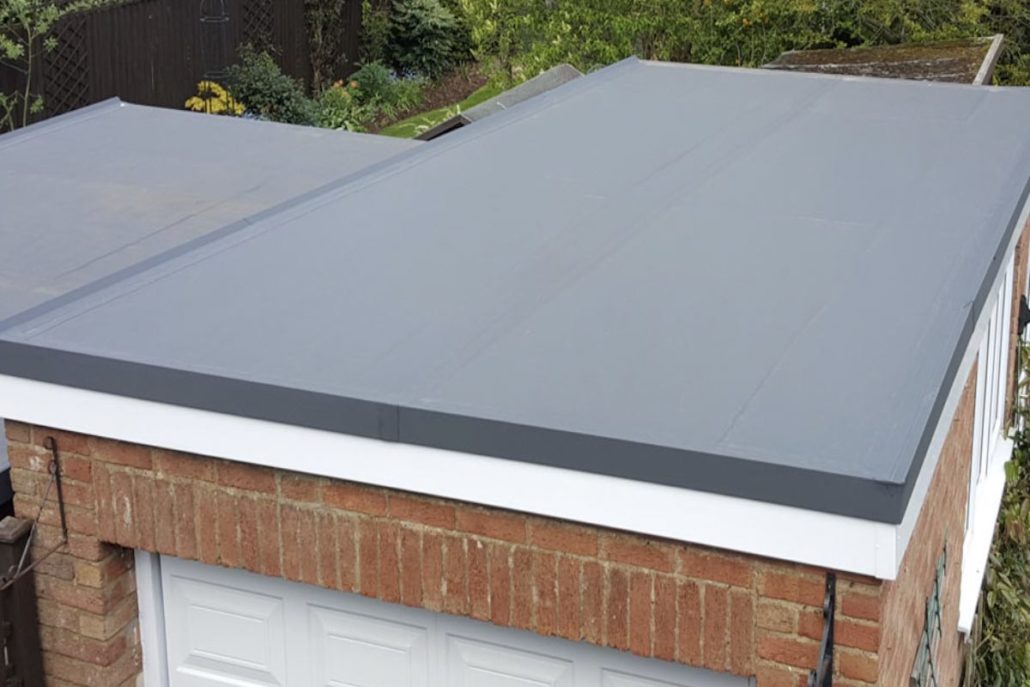The modern flat roof uses high-quality, industrial-grade sheets, such as thermoplastic polyolefin (TPO), polyvinyl chloride (PVC), or EPDM synthetic rubber. Although there are many benefits of flat roofs, the most obvious one is the cost. Flat roof materials are relatively cheaper because they don’t need a lot of curb appeal.
Similarly, the installation is less risky, and the cost of labor is reasonable. In today’s article, we will discuss different types of flat roofs and their unique characteristics. That way, you can make an informed decision and choose a material that best fits your commercial building needs. Read on!
Polyvinyl Chloride (PVC)
PVC is a single-ply roofing solution for commercial buildings. It is made of high-quality polyvinyl chloride (plastic material) with a lower percentage of petroleum and oil. The hot air welded seams make PVC roofing durable and moisture-resistant.
Some commercial buildings, such as manufacturing facilities and warehouses, are usually prone to chemical exposure. Toxins and harsh chemicals can cause significant damage to the roof if it is made of asphalt. In contrast, PVC roofing is highly resistant to chemicals, making it worth your investment.
Besides, PVC flat roofing is resistant to fire because it does not support combustion and is difficult to ignite. PCV roofing has been declared fire-resistant after being tested with UL and FM fires. Thanks to the durable material, PVC roofing is resistant to water and winds. Because PVC roofing is recyclable, it is an eco-friendly choice for commercial buildings.
EPDM Flat Roof
EPDM is high-quality and durable roofing made of synthetic rubber material. It is a rubber membrane most widely used on commercial roofs and can withstand harsh weather conditions, including high wind, rain, snow, and hail damage.
Research highlights that EPDM synthetic rubber material is ideal for all types of climates, unlike other roofing materials. It remains stable with changing temperatures, meaning the roofing system will keep the commercial building free from leaks and damages for a long time.
Many people call EPDM a cool roof because it has excellent heat minimization properties. When you have an EPDM roofing system installed, your HVAC system will work efficiently and prevent it from overworking. That way, you will have lower energy bills at the end of the month, and you can spend the saved money on other business operations.
If you are an environmental enthusiast, the EPDM material is an energy-efficient and eco-friendly option for your commercial building. It can also help reduce greenhouse gas emissions and contribute to a healthy, clean environment.
Thermoplastic Polyolefin (TPO)
TPO roofing membranes are made of ethylene propylene rubber. It is a single-ply roofing system with remarkable strength and durability. Like EPDM, TPO roofing is resistant to heat and ultraviolet (UV) rays of the sun.
It is likewise energy-efficient, easy-to-install, and cost-effective. TPO roofing material is resistant to punctures and tears. It has excellent resistance properties to dust, debris, and algae accumulation. The heat-reflective properties make it energy-efficient.
Moreover, TPO roofing systems are eco-friendly solutions to commercial buildings because they are made of recyclable material. Because TPO is an energy-efficient roofing system, it can significantly reduce the urban heat island effect.
Final Words
All three types of flat roofs reviewed above are excellent options for commercial buildings. The selection of material depends on your personal preferences, environmental conditions, weather effects, and cost-effectiveness.

